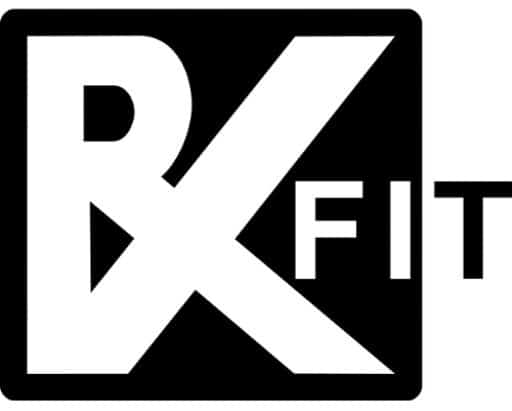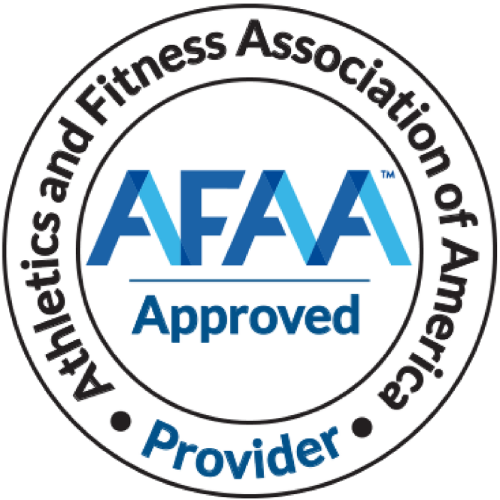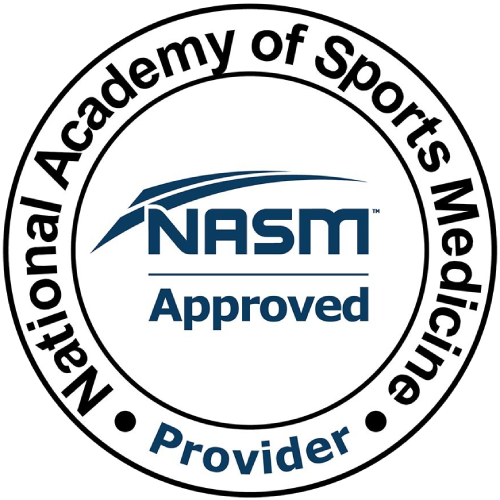We know that exercise is important, so let’s discover the power of “corrective exercise,” a specialized approach designed to alleviate pain, enhance mobility, and boost strength and endurance.
By targeting imbalances, this transformative technique relieves chronic discomfort, restores the natural range of motion, and builds resilience. From tackling chronic pain to maintaining overall well-being, corrective exercise presents a proactive solution.
If you are one of the millions of people who suffer from chronic pain and so on, you can benefit from corrective exercise. Explore its principles and applications to reshape your relationship with your body, whether seeking relief, improved mobility, or enhanced physical fortitude.
Let’s take a closer look.
What Is Corrective Exercise?
Corrective exercise is a type of physical activity that is designed to improve your body mechanics, movement patterns, joint function, and imbalance. It pulls from our knowledge of anatomy, physiology, and biomechanics to help identify the root cause of your movement dysfunction and then create a plan to correct it.
This is different from traditional exercise, which is often geared towards improving your cardiovascular health, losing weight, or increasing muscle mass. Corrective exercise is about fixing the way your body moves so that you can move more efficiently, relieve pain, and prevent injury.
The Science Behind Corrective Exercise: How It Works
Corrective exercise unveils the connection between our body’s neuromuscular system and the potential for holistic restoration. As our neuromuscular system carries out movement and equilibrium, imbalances from sedentary lifestyles or injuries can disrupt this delicate harmony, leading to altered patterns and pain.
Corrective exercise operates on neuromuscular adaptation, utilizing the brain’s remarkable plasticity(the quality of being easily shaped) to rewire movement patterns. By meticulously targeting weak muscles, inhibited firing sequences, and misaligned joints, the corrective exercise aims to “re-teach” the body’s proper movement mechanics.
One study, focusing on individuals with knee joint pain, revealed that targeted corrective exercises contributed to enhanced joint stability and reduced pain levels.
Corrective Exercise Myths and Misconceptions
As with fitness and well-being, myths, and misconceptions often cloud our understanding. The effectiveness of approaches like corrective exercise is no different.
Let’s clear the air to help you make informed decisions about integrating corrective exercise into your fitness journey.
Myth 1: Corrective Exercise Is Only for People With Chronic Pain
Truth: While corrective exercise is indeed helpful for those with chronic pain, it is for anyone seeking to improve movement quality, prevent injuries, and optimize physical performance.
Myth 2: Corrective Exercises Are Time-Consuming and Impractical
Truth: Corrective exercises can be efficiently integrated into existing routines as part of warm-ups or cool-downs.
Myth 3: Corrective Exercises Are Redundant for Experienced Athletes.
Truth: Even seasoned athletes can benefit from corrective exercises. The demands of rigorous training can lead to injuries. Corrective exercises can act as a crucial counterbalance supporting long-term athletic development.
Why Is Corrective Exercise Important
More and more people are sitting at desks all day, whether at work or home. As a result, our posture is slowly deteriorating, and we’re developing more aches and pains.
What’s more, many of us don’t move enough throughout the day to offset the negative effects of sitting, even forsaking a workout at-home exercise routine. This lack of movement can lead to a whole host of issues, including:
- Poor posture
- Tension headaches
- Neck pain
- Back pain
- Shoulder pain
- Hip pain
- Knee pain and so on.
However, these negative effects don’t only burden those with a sedentary lifestyle, athletes are also susceptible to pain and movement dysfunction. This is because, when we train and put our bodies under constant stress, imbalances can develop. For example, if you’re a runner who only runs forwards, you may develop tightness in your hip flexors and weakness in your glutes.
After assessing and identifying the problem, your corrective exercise specialist will create a customized plan to address your specific needs. This may include mobility exercises, stretching, and strengthening exercises.
Kick Start Your Fitness Journey With Our Online Fitness Masterclass!
Understanding Common Movement Dysfunctions and Their Impact
In today’s sedentary lifestyles, prevalent movement dysfunctions disrupt physical well-being, resulting in pain, restricted mobility, and vulnerability to injuries.
These stem from habits and poor mechanics, including forward head posture leading to neck pain, rounded shoulders causing upper back weakness, anterior pelvic tilt contributing to lower back discomfort, knee valgus (knock knee) increasing knee injury risks, and limited hip mobility impairing overall movement.
The cure is corrective exercise—a targeted approach encompassing stretching, strengthening, and neuromuscular retraining. By managing the root causes, these exercises empower individuals to fix movement dysfunctions and restore pain-free mobility, offering a transformative way to enhance physical vitality.
Preventative Corrective Exercise: Avoiding Problems Before They Arise
In a time filled with movement dysfunctions and injuries, the idea of preventative corrective exercise appears as an effective defense. Regular assessments and targeted exercises form the cornerstone of this approach.
By identifying early warning signs like discomfort or changes in movement, you can seamlessly integrate tailored exercises into daily routines, fostering muscle balance, joint stability, and alignment.
Who Can Benefit From Corrective Exercise?
Anyone who suffers from pain, movement dysfunction, or poor posture can benefit from corrective exercise. This also includes those who want to prevent further injury by improving their neuromuscular structure that stabilizes their joints.
For example, if you have knee pain, corrective exercise can help by strengthening the muscles that support your knee joint and improving your movement patterns. This, in turn, will take the stress off your knees and alleviate your pain.
As previously stated, athletes can also benefit from corrective exercise. Therefore, if you’re an athlete who wants to protect, recover and take your performance to the next level, corrective exercise can help get you there.
Overall, anyone who wants to improve their movement patterns, address pain, or prevent injury can benefit from corrective exercise.
Corrective Exercise for Different Age Groups and Fitness Levels
The beauty of corrective exercise lies in its adaptability. Exercises can be tailored to meet each demographic’s unique needs and goals. Regardless of age or fitness level, the underlying principles of restoring balance, optimizing movement, and preventing issues remain constant.
The inclusive nature of corrective exercise stresses its potential to elevate movement well-being for everyone, unveiling a path towards vitality and resilience.
Here are a few examples of how anyone can apply corrective exercises to daily life:
Seniors
For seniors, corrective exercise helps them maintain independence and vitality. Tailored exercises that emphasize joint mobility, balance, and muscle strength can reduce the risk of age-related declines. Seated leg lifts to enhance lower body strength and gentle spine stretches to maintain flexibility are examples of exercises that can cater to their needs.
Office Workers
Sedentary routines wreak havoc on office workers’ posture and well-being. Corrective exercise can offset these effects through simple practices. Neck stretches to alleviate tension, seated twists to promote spinal mobility, and shoulder blade squeezes to combat rounded shoulders are ideal exercises to weave into the workday.
Athletes in Recovery
Athletes recovering from injuries can also use the power of corrective exercise. Modified movements that rebuild strength while respecting healing timelines are crucial. Controlled range-of-motion exercises, like leg raises for lower limb injuries, or resistance band pulls for upper body injuries, can aid in recovery without hindering progress.
Fitness Enthusiasts
Even the most avid fitness enthusiasts benefit from corrective exercise to fine-tune their performance. By addressing imbalances, they can improve training results while reducing the risk of injuries. Core stabilization exercises for runners or shoulder mobility drills for weightlifters are instances of corrective exercises that meet their fitness goals.
What Does a Corrective Exercise Specialist Do?
A corrective exercise specialist is a fitness professional who has completed specialized training in exercise rehabilitation and movement dysfunction. They carry out comprehensive assessments to identify the root cause of your pain or movement dysfunction.
This assessment will include pinpointing underactive and overactive muscles, testing your range of motion, and assessing your posture. Once the root cause has been identified, they will design a personalized program to manage your specific conditions.
This plan will include a combination of exercises that focus on mobility, stability, strength, power, and endurance. The goal of these exercises is to improve your movement patterns and joint function so that you can move more efficiently and pain-free.
A corrective exercise specialist will also provide you with guidance on how to improve your posture and movement patterns in your everyday life. They will also offer advice on topics such as ergonomics, sleep, and nutrition.
How Do I Find a Corrective Exercise Specialist Near Me?
If you’re interested in finding a corrective exercise specialist in your area, the best place to start is by asking your doctor or physiotherapist for a referral. You can also search online for “corrective exercise specialist near me.”
When searching for a corrective exercise specialist, it’s important to make sure that they have the proper qualifications. They should be certified through a reputable organization such as the National Academy of Sports Medicine (NASM).
It’s also important to make sure that they have experience working with people who have similar issues as you. For example, if you have lower back pain, make sure that they have experience working with people who have lower back pain.
When you’ve found a few potential specialists, reach out to them and ask questions about their qualifications, experience, and approach to corrective exercise. This will help you find the right corrective exercise specialist for you.
Integrating Corrective Exercise into Your Fitness Routine
As time goes on and you are seeing results, your routine should evolve. With our team of fitness experts and mobility trainers , you can refine your regimen while developing strength, flexibility, and balance. Here’s a great place to start:
Neck Relaxation
Initiate with gentle neck stretches, gently tilting your head from side to side or rotating it in controlled circles. Gradually introduce neck isometric exercises, where you apply light pressure with your palm against your forehead while resisting with your neck muscles, fostering strength and stability.
Shoulder Mobility
Incorporate doorway stretches to enhance shoulder mobility and relieve tightness. Progress to scapular retractions—drawing your shoulder blades together—to counteract rounded shoulders. Elevate your routine with resistance band exercises like external rotations, elevating your rotator cuff strength.
Lower Back Care
Engage in cat-cow stretches to promote flexibility and mobility in the lower back region. Transition to bird-dog exercises—extending one arm and the opposite leg while maintaining balance—to fortify your core and lower back muscles.
Navigating your corrective exercise journey effectively entails the following principles:
- Begin Gradually: Commence with a brief duration of targeted exercises and gradually extend the time as your body adapts.
- Consistency is Key: Dedicate 2-3 sessions each week for substantial, lasting benefits.
- Progress Incrementally: As your strength and mobility burgeon, advance to more challenging variations, amplifying repetitions, integrating resistance bands, or exploring intricate movements.
- Listen to Your Body: Discomfort can be expected, but steer clear of exercises that cause pain. Modify or consult with a professional if necessary.
- Personalize Your Approach: Tailor your routine to your unique requirements. If you’re an athlete, infuse exercises heightening performance; if recuperating from injury, concentrate on rehabilitation.
- Blend with Regular Fitness: Seamlessly merge corrective exercises into your warm-up, cool-down, or even between sets during conventional workouts.
Kick Start Your Fitness Journey With Our Online Fitness Masterclass!
5 Corrective Exercise Modalities
Corrective exercise is a broad term that encompasses a variety of different modalities. Here are five of the most common modalities that you may encounter when working with a corrective exercise specialist.
Mobility
This refers to exercises that increase your range of motion and flexibility. These exercises are often used to address pain or movement dysfunction in a specific area while increasing your overall recovery time.
Stability
These exercises improve your ability to control your body which improves your agility. They are often used to address imbalances between the muscles that stabilize a joint.
Strength
Here you can improve your ability to generate force while increasing your bone density. Also, if you are looking to lose weight and boost your overall energy levels this is one of the best modalities for you.
Power
This type of exercise helps you to generate force quickly which can improve your athletic performance. These exercises are often used by people who are looking to improve their speed or explosiveness on top of losing weight.
Endurance
Here you can improve on sustaining a moderate to a high level of effort for an extended time. Along with strength training, this is one of the best ways to lose weight while releasing endorphins for pain relief.
The Role of Nutrition in Corrective Exercise and Recovery
Proper nutrition emerges as a vital partner, boosting recovery and performance holistically. Balanced nutrition provides essential amino acids for repair, omega-3 fatty acids to combat inflammation and enhance mobility, and antioxidant-rich foods to curb pain. Nutrition has a deep impact on muscle and joint health, ensuring recovery support, carbohydrates maintain energy and healthy fats promote cellular healing.
By staying well-hydrated, and including lean proteins, colorful fruits and vegetables, whole grains, and healthy fats, individuals can strengthen their corrective exercise regimen.
Case Studies: Real-Life Success Stories with Corrective Exercise
These real-life success stories underscore the tangible benefits of corrective exercise. Through personalized approaches, these individuals conquered their challenges, transcending pain, limitations, and imbalances.
Case Study 1: Deedee K. Female, 62 years old
- Dysfunction: Low back pain when walking for a while, knee pain in right leg
- Functional Goals: To garden and work on her house projects, pain-free
- Aesthetic Goals: Build muscle on her small frame.
Corrective Fitness Program
DeeDee had very weak abs in the front (anterior) and because of the back pain, she tended to lean into her right leg which led to compression in the right knee.
The fix was to have a combination of exercises that focused on increasing anterior core strength in longer ranges so that way she stayed mobile while getting stronger; combined with quad flexibility at the beginning and end of every session (this helped reduce strain on her right knee).
In the middle of the program, her frame was loaded with weight in compound movements. Over time we started to see greater strength which led to a toner body and increased flexibility. The key was to improve strength in every biomechanic while also increasing her range of motion. Since the elderly have difficulty producing muscle, she needed to eat a low-inflammatory diet with more protein than someone half her age usually needed.
Proof
About 6 months into our program Deedee was working on her roof while standing on a ladder. She had a misstep and fell off the ladder about 8 feet off the ground and onto her bottom. She walked away with only a bruise and a story when previously she wouldn’t have been able to walk straight if she sat too long.
Case Study 2: Brian M. Male, 48 years old
- Dysfunction: Left shoulder pain when reaching overhead, Left hip pain when sitting for a while or when trying to sleep. Could not sleep through the night because of the pain.
- Functional Goals: To play tennis in a league
- Aesthetic Goals: Build muscle in the upper body
Corrective Fitness
Brian played Division 1 baseball when he was much younger so it was decided effort was not going to be an issue. The problem was going to be technique. At the beginning of every session, we had to work on his cross-rotational range under tension (using a weight or a band to twist him). This slowly opened him up to allow for his QL in the lower back to release tension on that hip while at the same time increasing the range in his shoulders.
Because tennis is a high-impact sport we had to focus on the mobility of all of his joints over that of strict muscle building. Every time he played he would cause compression to those joints and we would have to correct it in the sessions and that would slow down progress, so instead we focused on making sure that compression didn’t happen by increasing his mobility.
Even when working on his big compound exercises (squat, deadlift, press) we would increase his range of motion in every direction. Because this does not build muscle very quickly we went with a light load and increased volume (more repetitions, less rest), that way he would still see results with his upper body aesthetic goals.
Drinking enough mineral-based water throughout the day was a key component here. This allowed for the muscle to stay fluid and malleable. Having a softer musculature reduces tension pulling on the joints and helps with any potential wearing on those joints.
Proof
A year into training he decided to join a tennis tournament for what he thought was his age group (50-year-old range). During the tournament weekend, he had many matches in Texas heat (100-110 degrees) against men half his age. He made it through every match, all weekend long (multiple matches a day) without any injuries or pain.
Need a Corrective Exercise Specialist to Help You Be Your Best Self?
If you’re looking for a way to improve your overall health and quality of life, corrective exercise may be right for you. Corrective exercise can help you move better, reduce pain, and improve your overall health. A corrective exercise specialist can help you identify the root cause of your pain and create a personalized plan to meet your needs.
If you’re looking for a qualified corrective exercise specialist in Austin, reach out to us today. We at RXFit provide a variety of services to help you achieve your health and fitness goals and get more out of life. We offer personal training, group fitness classes, and corrective exercise services to meet your needs.
Contact us today to learn more about how we can help you be your best self.


